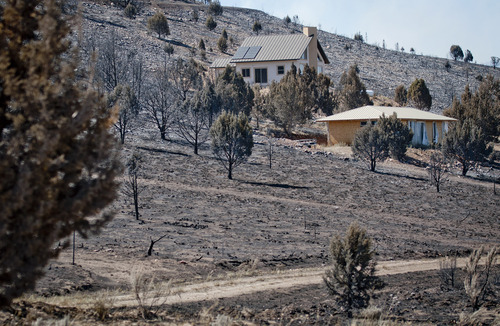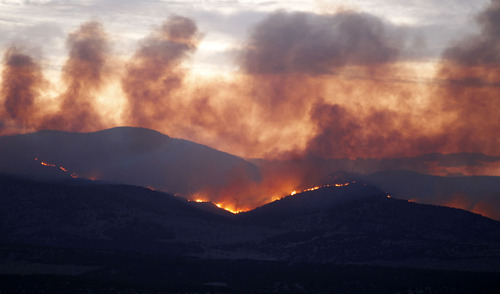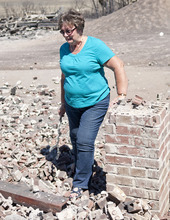This is an archived article that was published on sltrib.com in 2012, and information in the article may be outdated. It is provided only for personal research purposes and may not be reprinted.
Yes, copper thieves stole ground wires from electrical poles in Sanpete County, but even with the wire in place, it may not have prevented the Wood Hollow Fire.
A deputy state fire marshal's report says two sets of electrical lines were too close and arcing lines sent so much power into the ground, it probably would have been too great for the ground wire anyway.
"The ground wires aren't specifically designed to dissipate the amount of energy that particular issue had," Utah Deputy State Fire Marshal Troy Mills said in an interview Wednesday. "What the ground wires are designed to do is dissipate the nuisance power on the system."
Ground wires "may have made a difference," Mills added, "but I don't know that they would have eliminated the risk of having a fire."
The Wood Hollow Fire ignited June 23 near Fountain Green in Sanpete County. It killed James T. Martin, who was living in a trailer near Indianola. The fire also destroyed 52 homes and burned 47,000 acres.
The electrical lines belong to Rocky Mountain Power. A spokesman on Wednesday issued a statement:
"The investigation into the Wood Hollow fire is a top priority for Rocky Mountain Power," the statement said. "We want to understand exactly what happened. We are in the process of doing our own detailed technical analysis in addition to cooperating with fire investigators. There are aspects of this investigation that have yet to be fully analyzed."
The problem, according to Mills' report, is there was a 138 kilovolt transmission line and poles below a 345 kilovolt line. Copper thieves stole 7 or 8 feet of the ground wires on the poles of the 138 kilovolt structure. But the copper wires remaining above that height were melted, the report says.
There also was discoloration on the conductors of the 345 kilovolt line, indicating there had been arcing.
Mills examined the electrical system two days after the fire ignited.
"The wind began to increase in the afternoon," Mills wrote in his report, "and I observed the conductors of the 345 KV line bounce up and down with at least two feet of movement above the 138 KV structure."
Mills said it appears the 138 kilovolt line was in place before the 345 kilovolt line was installed. Mills, who before becoming a fire marshal worked as a lineman for a power company, said someone should have recognized a problem in the engineering phase and not placed the higher voltage line above the lower voltage line.
"Had that 138 kilovolt structure been moved a little ways out from the conductors, I think that would have made a difference, yes," Mills said in the interview.
The lines sit on land controlled by the Bureau of Land Management. Mills said there was "a good job" of weed abatement in the vicinity, but grass had grown around the poles and anchors.
Steve Hill, a Salt Lake City attorney, said some people who suffered losses in the Wood Hollow Fire have been in contact with his legal team. Hill is part of a team of attorneys who have been working with victims of the 2007 Rice Canyon wildfire near San Diego, also started by electrical lines.
The San Diego Union-Tribune reported last month that utility company San Diego Gas & Electric has paid more than $1.5 billion to settle claims from that fire.
Hill on Wednesday said he is aware of the fire marshal's report in the Wood Hollow Fire.
"We are looking at whether or not there was a good claim for negligence," Hill said, "but at this point we are not ready to state that on the record, whether there was negligence."
Negligence is the word used in Utah's criminal and civil statutes when determining whether someone or an organization should be held responsible for a wildfire. Despite the concerns he listed, Mills isn't sure whether Rocky Mountain Power was negligent.
"I think I'd be hard pressed to use that term," the deputy fire marshal said. "That's certainly something for people with initials behind their name and who make a lot more money than I do to decide."
Twitter: @natecarlisle







